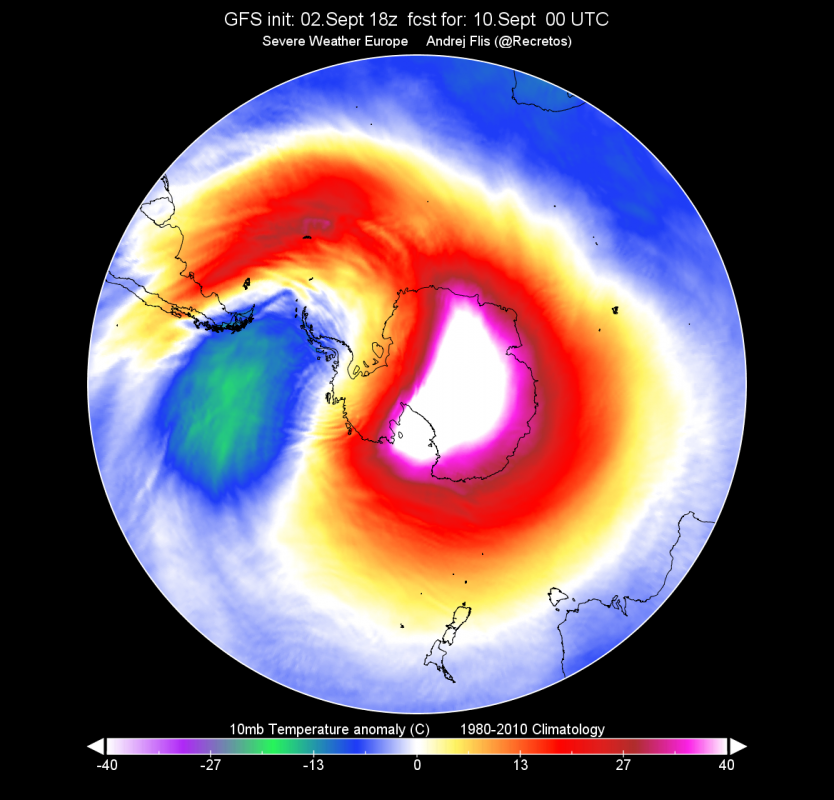As we have summer and warmth here on the north hemisphere, there is winter on the south side of the globe. And every winter, regardless on which side of the globe, the polar vortex spins high up in the stratosphere. Currently it is undergoing a sudden stratospheric warming event.
We have talked about the polar vortex and the stratosphere before, what it is and what is its importance.
We were also following the sudden stratospheric warming on our side of the globe back in January 2019, and we wrote an article about it that contains useful information about this large process.
https://www.severe-weather.eu/long-range-2/sudden-stratospheric-warming-underway
Sudden stratospheric warming events (from now on SSW), are much more common in the northern hemisphere. That is because the complex terrain topography and atmospheric wave breaking enable more disruptive dynamics to the polar vortex. While over the south pole, there is more water surface area and less complex terrain topography close to the pole. SSW’s over the south pole are rarer, and only two have occurred in known (reliable) records, in 2002 and 2010. Below is a graphic that shows temperature over the south pole at 10mb pressure level, which is around 30km high.
As we look at the temperature anomalies, we can see how strong this warming is, pushing the temperatures up to more than 40°C above normal over a large area at 10mb pressure level (~30km high)
These events are significant, as the warming and the disruption of the polar vortex eventually makes its way down to the troposphere and can cause a change in weather patterns. It can bring colder weather and snow into lower latitudes, for example, Australia and New Zealand. A lot depends on the current weather patterns since the effects of these SSW’s can be sometimes quite dynamic and last for different time periods. The graphic below shows the 10mb geopotential height, where we can see the displaced polar vortex and the stratospheric “anti-vortex” (a polar high) pushing against it.
These events will also influence the annual growth of the ozone hole over Antarctica. Warming of the stratosphere should limit its growth, and we might see a smaller ozone hole this year. It will depend on the longevity of these events.
Meanwhile in the Tropical Atlantic – a destructive hurricane Dorian is pounding the Bahamas:
From the grinder: Grand Bahama devastated by Hurricane Dorian




